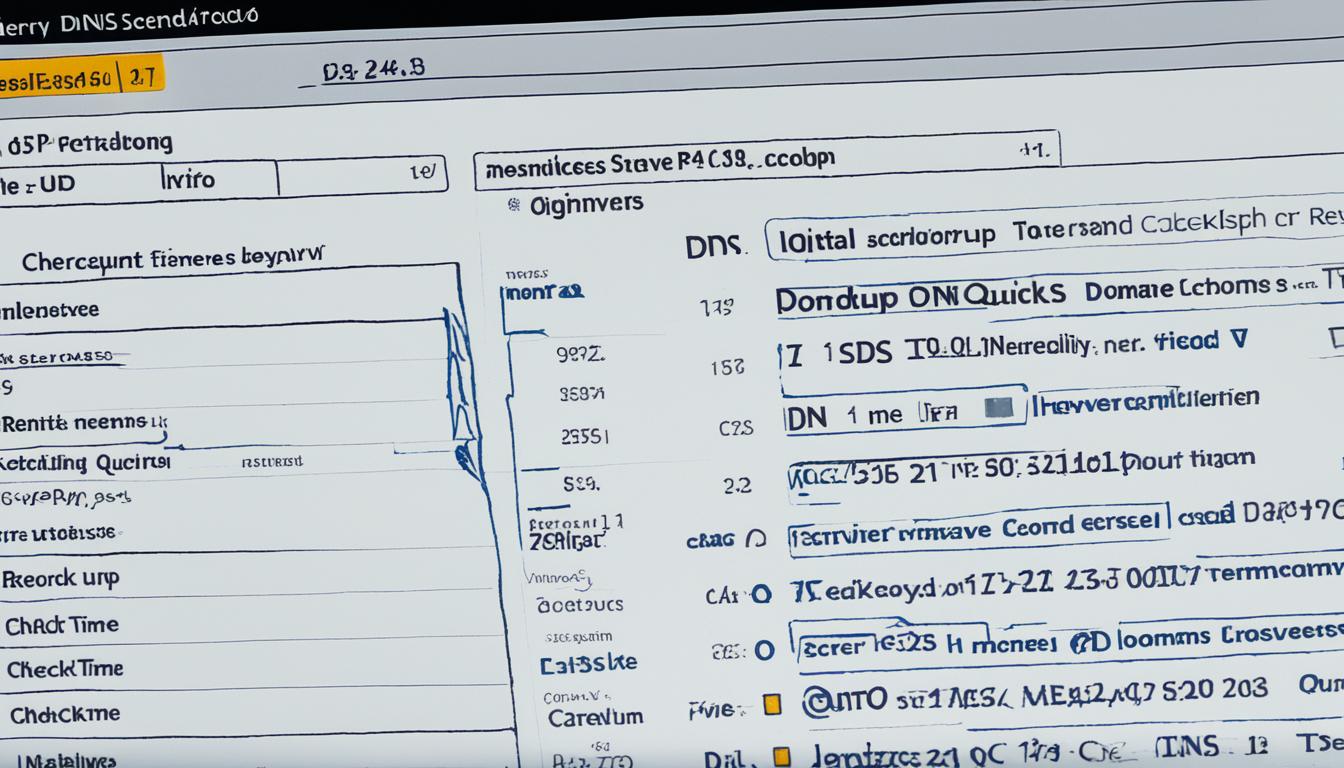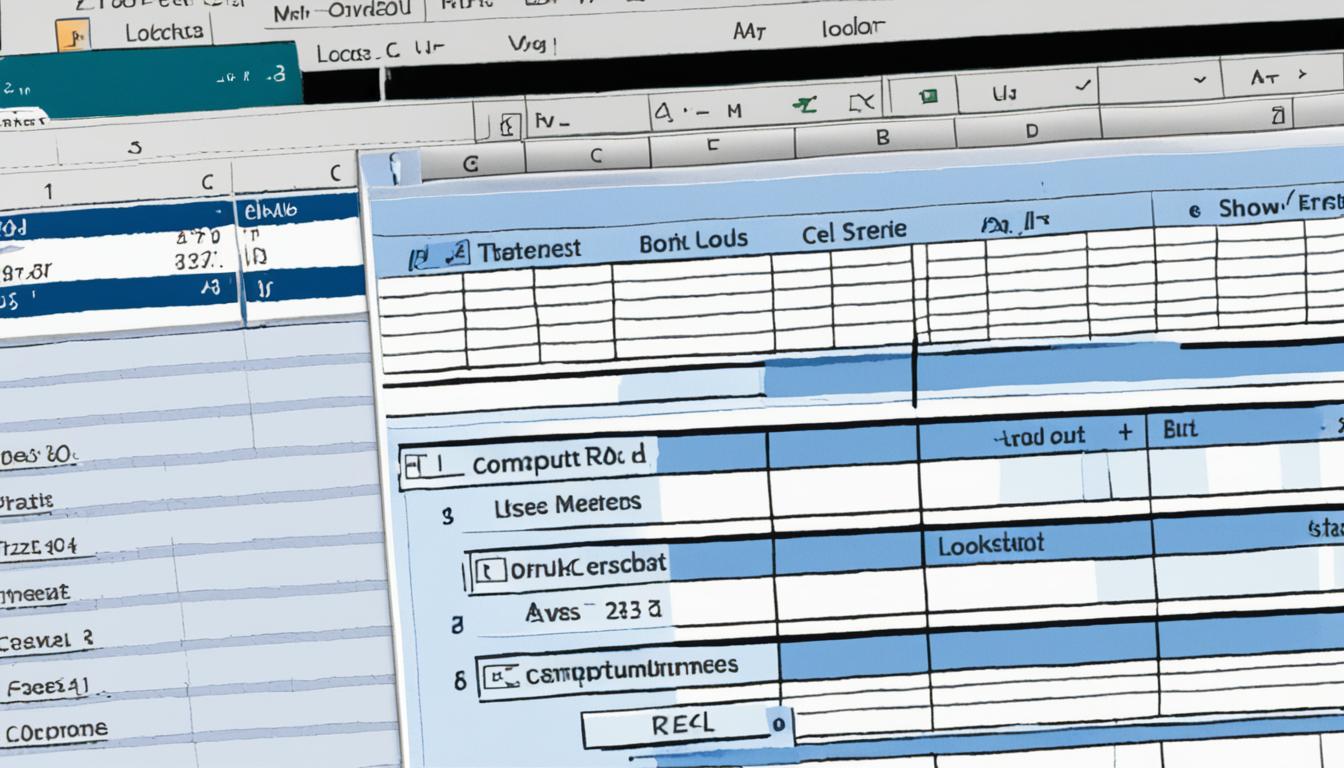How to find a domain based on the IP address?
Did you know that there are over 4.5 billion unique IP addresses in use today? With such a massive number of digital connections, it’s no wonder that tracing a domain based on an IP address can be a challenging task.
Whether you need to identify the owner of a specific IP address, troubleshoot network issues, or enhance your website security, knowing how to perform a reverse DNS lookup can be invaluable. In this article, I will guide you through the process of finding a domain based on an IP address using various tools and commands.
So, let’s dive into the world of domain lookup by IP and discover the secrets of reverse IP lookup!
Key Takeaways:
- Reverse DNS lookup is a method to find the domain name associated with an IP address.
- Tools like nslookup, dig, and host commands in Linux, or the nslookup command in Windows can be used for reverse IP lookup.
- Reverse DNS lookup results may not always be complete or accurate due to various factors.
- Reverse IP lookup has practical applications in troubleshooting, security, and tracking website visitors.
- Understanding the limitations of reverse DNS lookup is crucial for interpreting the results correctly.
Performing a Reverse DNS Lookup
A reverse DNS lookup is a valuable technique used to find the domain name associated with an IP address. By querying the IP address, we can retrieve the corresponding domain name. This process can be achieved with the help of tools like reverse DNS lookup, reverse IP tracker, reverse IP search, and reverse domain lookup.
When performing a reverse DNS lookup, you can use commands like dig, host, or nslookup in Linux, or the nslookup command in Windows. These commands allow you to enter the IP address and obtain the domain name linked to that IP. However, it’s important to note that not all IP addresses have a corresponding domain name. In cases of shared hosting, multiple domain names can be associated with a single IP address.
In the visual representation above, you can see an example of a reverse DNS lookup in action. The IP address 203.0.113.1 is queried, and the corresponding domain name “example.com” is retrieved. This image highlights the simplicity and efficiency of reverse DNS lookup for finding domain names based on IP addresses.
Benefits of Reverse DNS Lookup
The reverse DNS lookup process offers several advantages:
- Identification of the domain name associated with an IP address.
- Enhanced troubleshooting capabilities by identifying the source of network issues.
- Improved security through the identification of potential server weaknesses.
By leveraging reverse DNS lookup, individuals and businesses can gain valuable insights into the relationship between IP addresses and domain names. This information aids in various tasks such as network administration, website management, and security measures.
| Benefits | Description |
|---|---|
| Identification | Allows for the identification of the domain name associated with an IP address. |
| Troubleshooting | Assists in troubleshooting network issues by pinpointing the source of problems. |
| Enhanced Security | Facilitates the identification of potential server weaknesses and improves overall security measures. |
Reverse DNS Lookup in Linux
In Linux systems, there are three different commands that can be used for reverse DNS lookup: dig, host, and nslookup. Let’s take a closer look at each of these commands and their functionalities.
Dig Command
The dig command allows manual reverse DNS lookup in the terminal and is commonly used for examining and resolving DNS issues. It provides detailed information about DNS zones, name servers, and DNS records. With the dig command, you can query a specific IP address for its corresponding domain name or perform a reverse DNS lookup by querying a domain name for its associated IP address.
Host Command
The host command is another useful tool for reverse DNS lookup in Linux. Its primary function is to convert host names to IP addresses and vice versa. By entering a domain name as an argument, the host command can retrieve the IP address associated with that domain name. Alternatively, providing an IP address as input will return the corresponding domain name if available.
Nslookup Command
The nslookup command is a versatile tool commonly used for DNS-related tasks, including reverse domain lookup. It can be used in interactive or non-interactive mode to retrieve information about hosts and domains. By entering an IP address as an argument, you can perform a reverse DNS lookup to find the associated domain name. The nslookup command provides comprehensive DNS information, including domain names, IP addresses, and DNS record details.
Using these commands, you can efficiently perform reverse DNS record lookups in Linux systems. They are valuable tools for troubleshooting DNS issues, resolving hostname discrepancies, and retrieving information about specific IP addresses or domain names.
Reverse DNS Lookup in Windows
When it comes to performing a reverse domain lookup and checking DNS records in Windows systems, the go-to command is nslookup. By using the nslookup command in the command prompt with the IP address, you can access valuable information such as A records, NS records, and SOA records for a domain. This allows you to retrieve the hostname associated with the IP address and investigate any DNS issues or network problems that may arise.

Limitations of Reverse DNS Lookup
While reverse DNS lookup can be a valuable tool for finding domain names based on IP addresses, it is important to understand its limitations. The accuracy and completeness of the results obtained through reverse DNS lookup can vary due to several factors.
One limitation is the reliance on search engine databases and DNS records. Reverse DNS lookup uses these resources to map IP addresses to domain names. However, these databases and records may not always be up to date or comprehensive, resulting in incomplete or inaccurate information.
Another limitation arises from the absence or incomplete configuration of reverse DNS records. Reverse DNS records, also known as PTR records, associate IP addresses with domain names. In some cases, these records may not be properly set up or may be missing entirely. This can lead to incomplete or unreliable results when performing a reverse DNS lookup.
In addition, situations involving shared hosting can further complicate reverse DNS lookup. Shared hosting occurs when multiple websites are hosted on a single server, each with its own domain name. As a result, multiple domain names may be associated with a single IP address. This can make it challenging to accurately determine the specific domain name associated with an IP address.
Overall, it is important to be aware of these limitations when using reverse DNS lookup. While it can be a useful tool in many cases, it is not foolproof and should be used in conjunction with other methods for domain identification.

Uses of Reverse IP Lookup
Reverse IP lookup tools serve various purposes and can be highly advantageous. They play a crucial role in detecting spam emails by analyzing the reverse DNS (rDNS) names associated with IP addresses. By examining the rDNS names, these tools enable the identification of potential spam sources and help in implementing appropriate security measures to protect against spam attacks.
Furthermore, reverse IP lookup also allows businesses to track website visitors. By retrieving the hostnames of the IP addresses accessing a website, organizations can gain valuable insights into visitor behavior, interests, and preferences. This information can be utilized to optimize website content, enhance user experience, and tailor marketing strategies to target specific customer segments.
Reverse IP lookup is an indispensable tool for troubleshooting internet protocols. Whether it’s diagnosing DNS issues or network problems, this technique provides valuable information for resolving technical issues efficiently. By identifying the hosts associated with IP addresses, IT professionals can pinpoint the source of the problem and take appropriate measures to rectify it.
Moreover, reverse IP lookup contributes to improving security by identifying virtual hosts from web servers. This helps organizations identify potential vulnerabilities and take proactive steps to enhance their server security. By gaining insights into the hosting infrastructure, businesses can strengthen their defenses against potential threats and safeguard their sensitive data from unauthorized access.
Reverse IP lookup is a versatile tool that serves critical purposes such as spam email detection, website visitor tracking, troubleshooting, and security enhancement. By harnessing the power of reverse IP lookup, businesses can safeguard their online presence, optimize their website performance, and ensure a secure digital environment for their users.
Conclusion
In summary, finding a domain based on an IP address is made possible through the use of reverse DNS lookup tools. These tools provide the capability to query an IP address and retrieve the associated domain name. Whether you are using Linux or Windows systems, there are various commands available to facilitate this process. However, it is important to acknowledge the limitations of reverse DNS lookup. Not all IP addresses will have a corresponding domain name, and the results obtained may not always be comprehensive or precise. Despite these limitations, reverse IP lookup remains a valuable tool for numerous purposes, including spam email detection, website visitor tracking, troubleshooting, and bolstering security.
FAQ
How can I find a domain based on an IP address?
What is a reverse DNS lookup?
How can I perform a reverse DNS lookup in Linux?
How can I perform a reverse DNS lookup in Windows?
What are the limitations of reverse DNS lookup?
What are the uses of reverse IP lookup?
- How Strategic SEO Drove Growth for a CPAP E-commerce Brand - July 24, 2025
- Top 3 SEO Companies in Toronto: An Analytical Comparison - July 23, 2025
- SEO for Entry Door Services - April 24, 2025





















Post Comment
You must be logged in to post a comment.